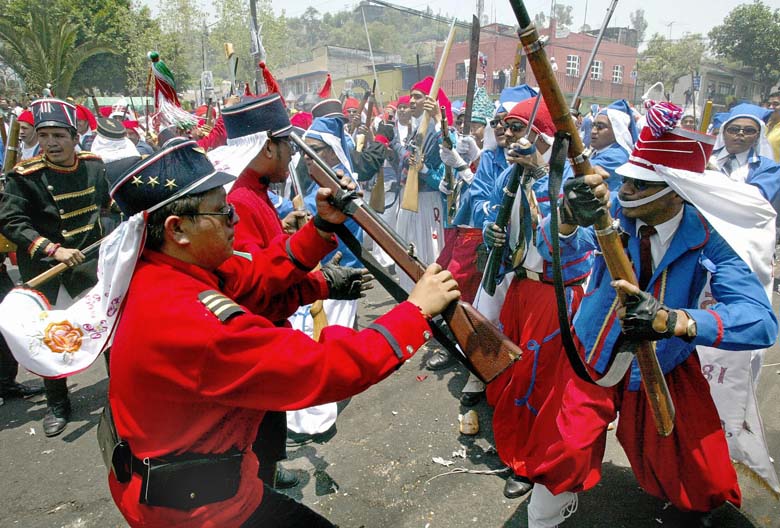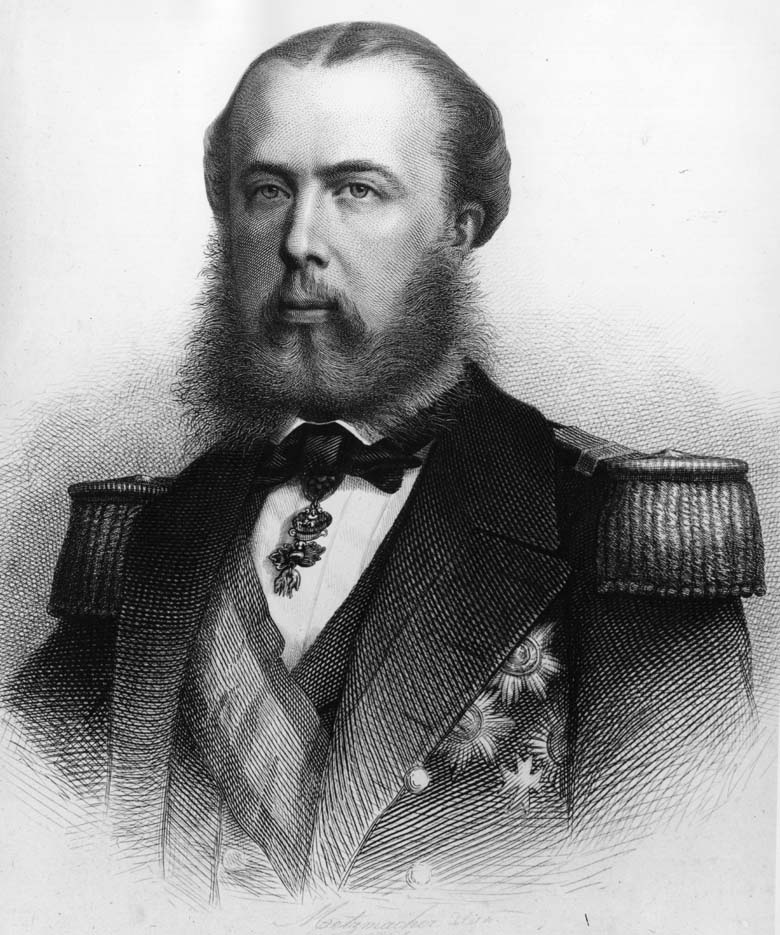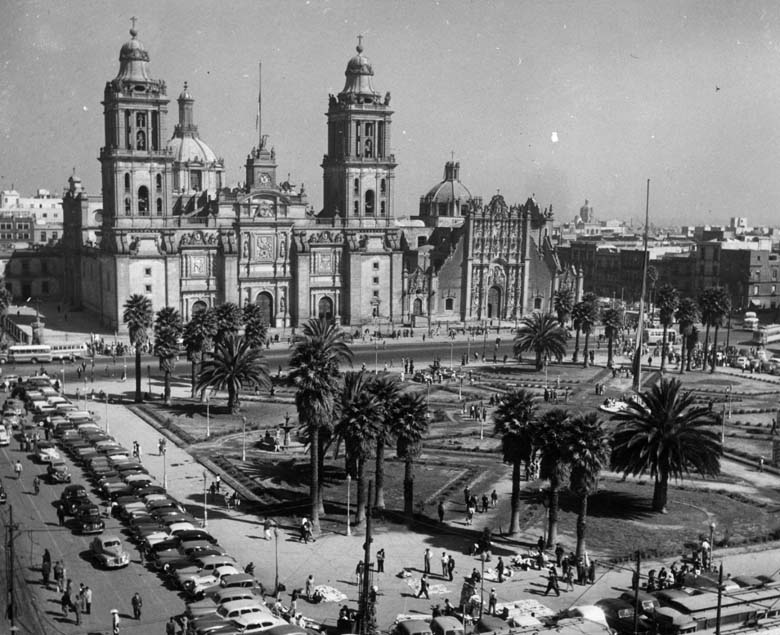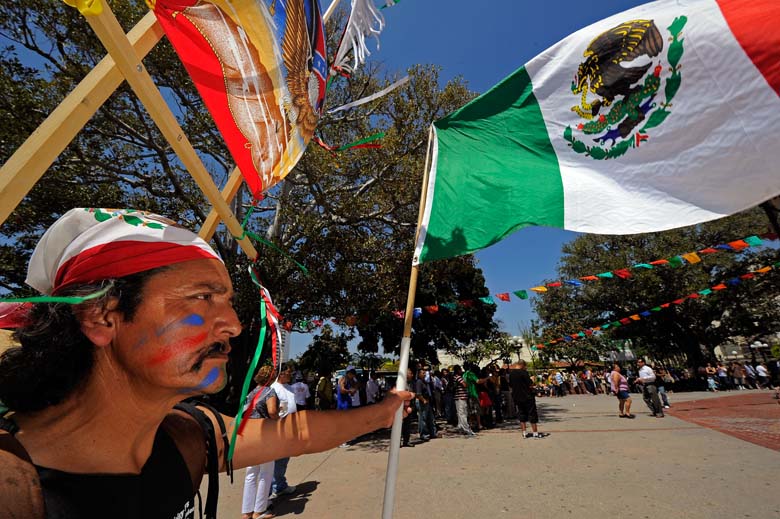
A boy rides in a low rider during a Cinco de Mayo parade on May 4, 2013 in Denver, Colorado. (John Moore/Getty Images)
Happy Cinco de Mayo! Today, Mexicans commemorate their victory over the French at the Battle of Puebla in 1862. But to many Americans, it’s “Mexican Independence Day.” However, this is incorrect. Mexican Independence Day actually occurs on September 16, when Mexicans commemorate the start of their revolt against the Spaniards in 1810.
In 1517, Francisco Hernández de Córdoba landed on the Yucatán peninsula. Córdoba is generally credited as the founder of Nicaragua. His “find” led to the arrival of the Spanish conquistador, Hernan Cortes in 1519. Cortes tried to conquer the Aztec Empire with 500 men. The defeat and the subjugation of the Aztec Empire to the Spanish crown was aided by the arrival of smallpox and typhus, brought by the Europeans. The New York Times writes:
Most of the conquistadors had been exposed to these viruses in Europe, so were immune to (protected from) their effects, but those of the New World were completely vulnerable…on the very evening that the Aztecs drove the conquistadors out of what is now Mexico City, killing many while routing the rest, a smallpox epidemic began. As it raged in the city, not only did the susceptible Aztec forces die in droves, but the psychological aspect of seeing Spaniards, who fought under a Christian god, resist this new malady while warriors of the Aztec gods were dying of infection demoralized the natives even further.
Mexico subsequently became a colony of Spain until the end of their revolution on September 27, 1821. In 1861 they would once more have to stave off one more incursion of colonial Europe against the Second French Empire, supported by Napoleon III of France, which the Battle of Puebla celebrates a victory against.
Learn more about the history and origins of Cinco de Mayo below!
1. The Battle of Puebla Was Caused by a Financial Conflict

Mexicans celebrate Cinco de Mayo with a reenactment of the 1862 battle between the French and the Zacapoaxtla Indians on May 5, 2001 in Puebla, Mexico. (Susana Gonzalez/Newsmakers)
The Battle of Puebla took place on May 5, 1862, near the city of Puebla, Mexico. It was fought by the French Empire, backed by Mexican nobles, against the Zacapoaxtla Indians and the Second Federal Republic of Mexico.
According to History.com, Mexican President Benito Juárez took over the Republic in 1861 following the Mexican civil war, known as the Reform War. The Reform War was fought between Liberals and Conservatives. The Liberals wanted a modern nation-state founded on liberal principles while the Conservatives advocated for a Catholic church-backed centralist government, with some even wanting a monarchy. The Liberals won but the war left Mexico deeply indebted to Spain, France, and Great Britain. When Mexico defaulted on its foreign debts, French leader Napoleon III, nephew of Napoleon Bonaparte, decided to annex part of Mexico in retaliation.
Spain and Great Britain eventually backed out of supporting France’s plan to conquer Mexico and set up a puppet Mexican regime. The French landed on Veracruz and drove President Juárez and his government into retreat.
2. The Mexicans Won at Puebla Against All Odds

Performers re-enact the “Batalla de Puebla”, in Mexico City on May 5, 2003, during Cinco de Mayo celebrations. The battle was fought and won against the French Army (R). (JORGE UZON/AFP/Getty Images)
The French, led by Charles de Lorencez, were much better equipped than the Mexicans, led by Texas-born General Ignacio Zaragoza, although reports of them being outnumbered are up for debate. According to Napoleon.org, “Zaragoza’s forces in the town numbered (according to French sources) 12,000 heavily entrenched men. Zaragoza however in his telegrams to the War Minister General Blanco refers to 3,500.” Whatever the number, many of them were indigenous Mexicans like the Zacapoaxtla Indians or of mixed ancestry, reports History.com.
The battle lasted from dawn to dusk, and when the French finally retreated, they had lost nearly 500 men. The Mexicans had lost less than 100.
The battle was not a major strategic victory for Mexicans, but it provided a much needed morale boost to its troops. However, the city was eventually lost in the Second Battle of Puebla. The capital shortly fell afterward and Napoleon installed Habsburg Austrian Archduke Ferdinand Maximilian as emperor of Mexico in 1864.
President Juárez declared Cinco de Mayo a national holiday in 1862, according to Mexconnect.
3. The U.S. Helped Mexico Regain its Independence

The Emperor of Mexico (1864 – 1867) Archduke Ferdinand-Joseph Maximilian (1832 – 1867), younger brother to Emperor Franz Joseph I of Austria. (Hulton Archive/Getty Images)
As an echo of the Monroe Doctrine, which opposed European colonialism in the Americas beginning in 1823, the United States eventually helped Mexico drive the French out.
In a last ditch effort, Maximilian invited ex-Confederates to move to Mexico in a number of settlements called the “Carlota Colony” and the New Virginia Colony in return for their support.
History.com writes, “In 1867—thanks in part to military support and political pressure from the United States, which was finally in a position to aid its besieged neighbor after the end of the [American] Civil War—France finally withdrew.”
With that, the fate of the last Mexican emperor was sealed. Napoleon urged the monarch to abdicate the throne, but Maximilian refused. He was eventually captured and sentenced to death by firing squad. The sentence was carried out on June 19, 1867.
4. Cinco de Mayo Grew Grew Popular in the 1950s & 1960s

The main square of Mexico City with the cathedral in the background. (Three Lions/Getty Images)
Cinco de Mayo had a resurgence of popularity in the 1950s and 1960s thanks to Chicano activists. “Chicano” is a chosen identity of some Mexican-Americans to promote indigenous/Mestizo cultures. According to Forgetting Identity, Recovering Politics: Rethinking Chicana/o Nationalism, Identity Politics, and Resistance to Racism in Alejandro Morales’s Death of an Anglo, “Within Chicana/o discourse, the name ‘Chicana/o’ has always signified not—or not simply—a racial identity but a political affiliation.” In simplest terms, the Chicano movement is a civil rights movement.
According to National Geographic, the Chicano movement used Cinco de Mayo to educate Mexican-Americans about their cultural history and to help Anglo-Americans to better understand Mexican culture.
5. Cinco de Mayo Became Commercialized in the 1980s

Jose Gregorio Perez attends Cinco de Mayo festivities on May 5, 2010, at El Pueblo de Los Angeles Historic Site on Olvera Street in downtown Los Angeles, California. (Kevork Djansezian/Getty Images)
As white Americans took notice of Cinco de Mayo, so did corporate America.
According to National Geographic, the 1980s are when “when the meaning of the holiday changed from community self-determination to a drinking holiday for many people.” Marketplace.org writes that writes that in 2013, Americans bought more than $600 million worth of beer for Cinco de Mayo. The number dwarfs other “big drinking” days like Super Bowl Sunday and St. Paddy’s Day. Sales of Mexican-style beer in particular increase by 15 percent during the week of Cinco de Mayo.
Happy Cinco de Mayo!